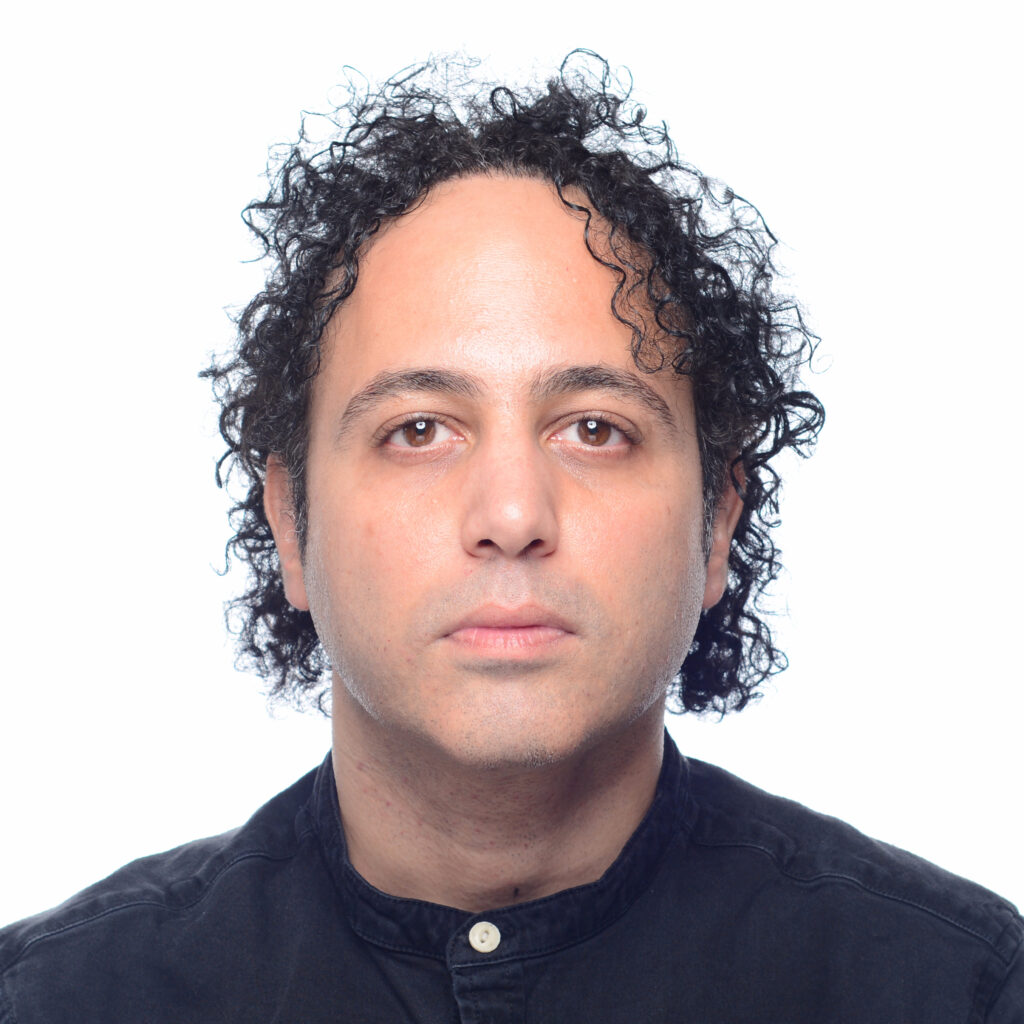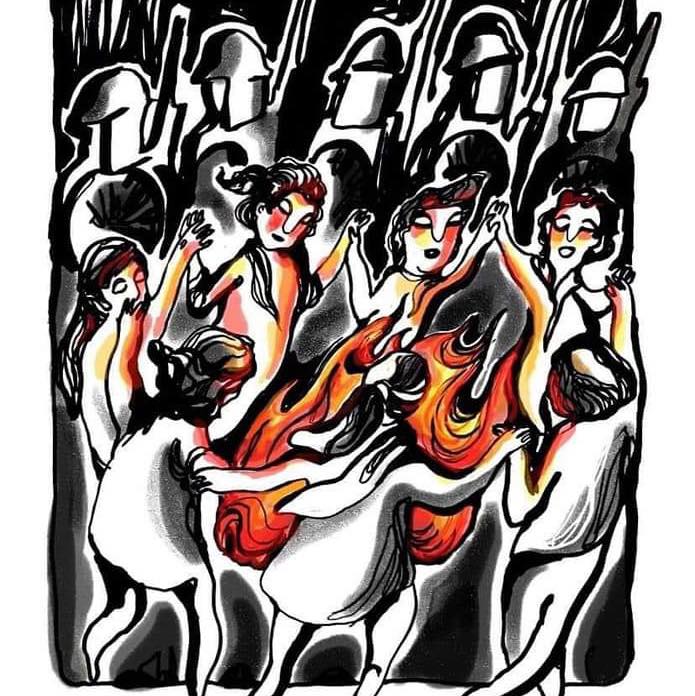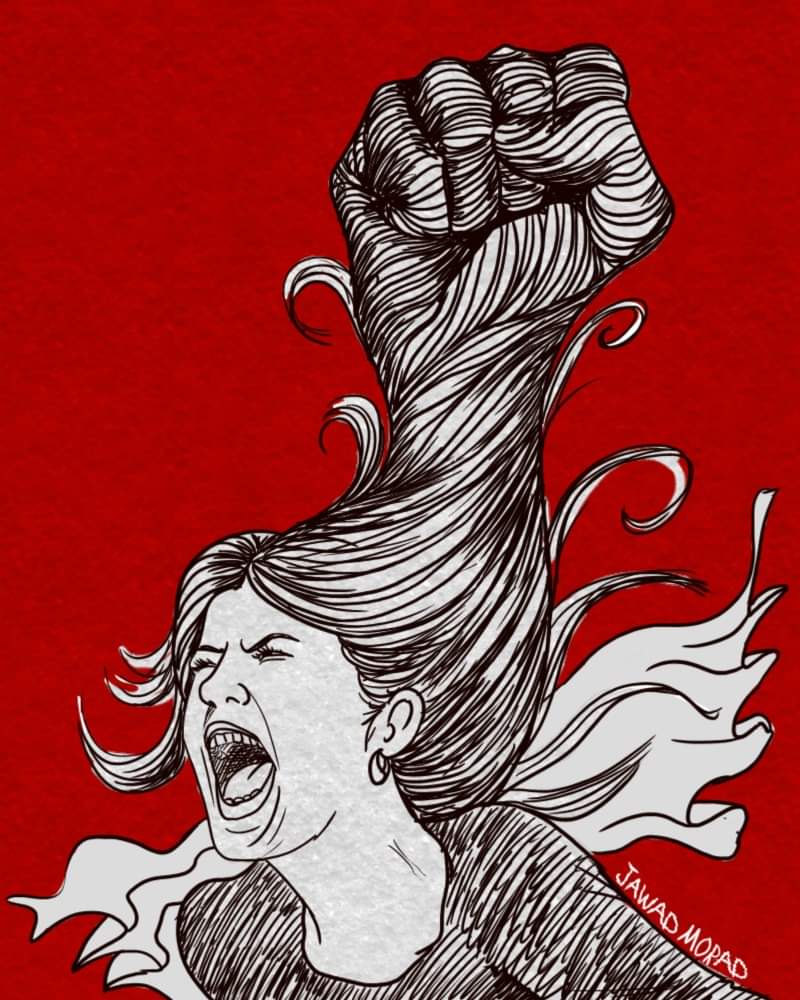
During her visit to Tehran with her family on September 13, Zhina (Mahsa) Amini, a 22-year-old from Kurdistan province, was arrested at the central metro station by the infamous “morality police” for ‘bad hijab’(wearing her headscarf slightly looser around her neck and head.) In a statement issued two days after her arrest, Tehran police said she suffered a heart attack while in custody and was “instantly hospitalized”. Several photos appeared on social media showing her unconscious on a hospital trolley with tubes and monitoring equipment attached. Zhina’s family insisted that official reports claiming she had epilepsy or historical heart problems were false. Her death was announced on September 16. Her injuries, including bleeding from one ear, suggest she was beaten between her arrest and arrival at the hospital. Police in Tehran have claimed that “there had been no physical contact between the officers who made the arrest and Mahsa Amini.”
Zhina’s skull was fractured, and her death was murder, according to lawyer Saeed Dehghan. The Kasra Hospital in Tehran, where Zhina was taken for intensive care, said in a statement that “the patient was already brain dead upon admission”. Next, CCTV footage from a “hijab class” was broadcast. The clip shows Zhina receiving “guidance” with several other women prisoners. Before collapsing and passing out, she is seen wearing a full-length coat and a headscarf. As new evidence confirmed today, Iranian medical officials believe Amini’s death was caused by head injury sustained during her arrest. Considering the photo of her swollen face and bleeding ears, this seems likely.
Zhina’s death has sparked hundreds of protests across the country and outside the hospital in Tehran since news of her death spread. Aside from burning hijabs, the slogans address political and economic situations, and the dress code issue. The protests led to the deaths of dozens of protestors, mostly young people. The security forces have arrested dozens of journalists and political activists along with several ordinary citizens. “Zhen, Zhian, Azadi,” the Kurdish slogan that means “Woman, Life, Freedom,” spreads beyond Iranian borders.
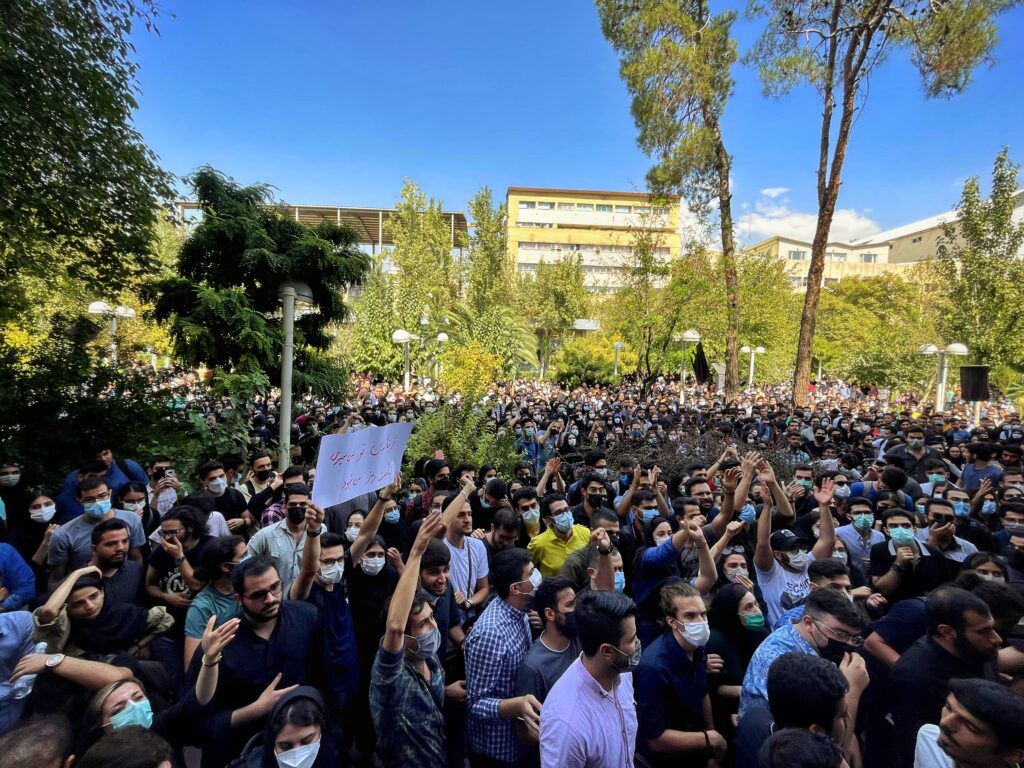
The Mirror of History: Four Decades of Repression and Struggle
In Kurdish language, Zhina is a word that means “life.” The death of Zhina (Mahsa) Amini, a young Kurdish woman from Saqezz’s Kurdistan, who was visiting Tehran for a short vacation, sparked local and international reactions. There have been a number of disasters like Zhina’s story over the past four decades following the 1979 Revolution’s defeat and the takeover of power by the Islamists, and the draconian consequences.
In the context of the imported modernism of Shah’s regime, which was brought back to power by a coup orchestrated by the West in 1953, women’s social freedoms and basic rights had provided breathing space for a large part of society in the 1960s and 1970s. The family-support laws were amended in a way that benefited women. However, Iran’s space of social freedom is not associated with nostalgia weaponization, the kind of images in the Persian-speaking mainstream media of the West and Saudi Arabia that tend to show an extremely distorted and limited view of Iranian society. A small minority of Iranian women attended college in 1979, compared to 55% today, and although there were bars and clubs in large cities like Tehran, most Iranians lived in rural areas, did not wear miniskirts, and did not attend cabarets regularly.
Nevertheless, the contradictions of imperialist dictatorial regimes in the global South were also present in Iran. The story of Iran has been part of what German-American sociologist and economic historian Andre Gunder Frank addresses in his 1972 Lumpenbourgeoisie, Lumpendevelopment. It was a lumpen development with all the contradictions of the peripheral countries that filled the Shah prisons with communist women who clashed with colonial modernity and Islamic reaction. Even though these Marxist-Leninist women did not take on the title of “feminist” as was the case in the Western New Left movements of the 1960s and 1970s, they were still engaged in struggles for women’s liberation in the context of the internationalist movement. And just like other global leftist movements across the globe, the Iranian left movement has suffered from misogyny, toxic masculinity, and homophobia, as well as the significant presence of “brocialists” throughout history.
When it comes to the intertwinement of the Left and women rights in Iran, from the story of the Women’s Association of the Tudeh Party of Iran, 1944-1948 to the 1970s, the image of the Iranian People’s Fedai Guerrillas, a Marxist-Leninist guerrilla organization in Iran at that time, revealed a very different side of women. The image of Marxist Iranain women was beyond the stereotypical roles of “mother” and “wife,” for the first time in a society under the control of religion and the imported conservative modernism of Shah’s dictatorial regime. However, in practice, the roots of institutionalized patriarchy and stereotypical gender roles and the nuclear family and the traditional motherhood, remained largely intact among Iranian leftist women. This history reveals the links between the roots of communist feminism and liberal/bourgeois feminism in Iran, the left side of history in the Middle East. Nevertheless, many of these Marxist female revolutionaries from the 1940s to the 1980s never identified themselves as “feminists.” This history, whether they have been seen out of context in today’s narrative of “feminism” or totally denounced by imperialist and liberal feminism that has dominated Iranian public discourse due to the brutality of the regime and the “democracy promoters” fishing in troubled waters.Women’s issues became increasingly pressing for Iranian society after the 1979 Revolution and the rise of Islamists. Many left parties and organizations did not understand the importance of the issue or, like the Tudeh Party of Iran (TPI), veiled women in the “anti-imperialist veil.”
Although policymakers in Moscow dictated the “Non-Capitalist Way of Development” to the TPI, it marginalized women’s issues and democratic demands in the face of the Khomeini regime and political Islam in Iran. This was also true for most of the other leftist parties and organizations that did not support the Islamic Republic tactically. They argued that to achieve equality between men and women, imperialism and the bourgeoisie must be abolished first. Aside from the scientific nature of such a theoretical argument, the objective context of the political and social developments in the Islamic Republic was the removal of the family protection law and the exclusion of women from social, political, and economic life.
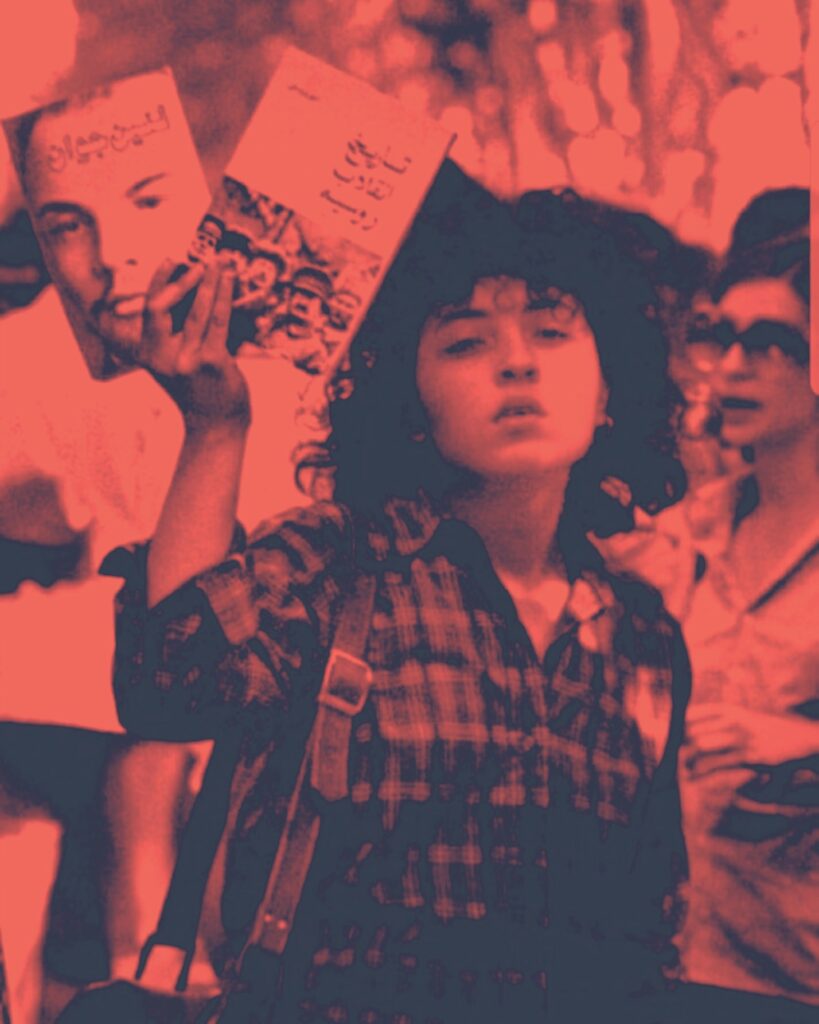
Between 1979 and 1982, there were more than 40 active women’s organizations, according to Shahin Nawai, a left-wing feminist political activist and scholar exiled in Berlin and one of the founding members of the National Union of Women after the 1979 Revolution. A total of 20 organizations were formed by secular forces or members and supporters of political parties. In contrast, five organizations were formed by religious forces closely aligned with the government. Other active organizations were women’s trade associations in government offices. According to her, many female activists were strongly influenced by political party views and did not want to overtly oppose the government. Supporters of these protests were unsure what to do. While women protesting the hijab approached these political parties and organizations in order to organize and take collective action, they did not have a plan to use this potential for rage against the system to mobilize for women’s rights. In such an environment, scattered women’s protests were bound to fail. In the fall of 1980, the regime passed a law requiring the hijab to be worn at work and punishing those who violated it.
As we follow this historical journey full of fear, tears, struggle and hope, the reactions to the tragedy of the Zhina are even more significant in light of the current state of Iranian society, the current regime, and its pro-West opposition. Society is fed up with the miserable living conditions, US sanctions, the parasitic financial capital that rules over the Islamic Republic, and the systematic looting. As a result of the possibility of the death of its leader, speculation has intensified about the political alignment of power and capital blocs. Observers have discussed the possibility that the military of the Islamic Republic, the militarized bureaucratic bourgeoisie, may act against the clerical body of the regime as a gesture of goodwill to the Iranian society. For a few more years, this would allow the current system to continue looting and ransoming the middle class. In this context of political economy and geopolitics, what impact does Washington’s provocative foreign policy against Beijing and Moscow have on the clerics and capitalist military ruling Iran while taking the IMF’s and the World Bank’s “structural adjustment” pills? Is the fate of the Joint Comprehensive Plan of Action (JCPOA) that was supposed to be imposed by the West on the regime of jurists and military capitalists relevant here? Iran’s energy resources are needed by the West, and the regime needs relief from sanctions and liquidity.
The purpose of this article is not to answer these geopolitical questions regarding Iran’s upheavals. As always, the entire public sphere has been occupied by the dominant neoliberal and imperialist discourse in the absence of independent Persian-language media. Its purpose instead is to challenge this dominant discourse and the issue of internationalist solidarity. As a result of mass protests, Iranians are experiencing widespread internet blackouts. In the meantime, Anonymous is said to be helping Iranian protesters evade Internet curbs amid social blackouts.
False Dichotomies of “Democracy Promoters,” Neoliberal Culture War, and People’s Agency
From the “reformist” Iranian newspapers, which fawned on Liz Truss as Thatcher II in Britain, to the propaganda of mainstream Western media and their Persian-language cartoons (especially the triplet London-based Persian-speaking satellite televisions, the BBC-Persian, Iran [Saudi] International and Manoto) and the rest of the psychological warfare of “democracy promoters,” from Voice Of America (VOA) to IranWire (the USAIDand the State Department) to the Independent Persian (Saudi’s propaganda), all relied fully on the dominant discourse of human rights, and in particular, of Iran as an exception to the rule. A “civilizational” logic embedded within this media causes the hijab to be perceived as the descriptor. Yet, today’s headlines are the familiar colonial pattern of autocratic versus democratic, free versus oppressed, empowered versus victimized, modern versus traditional, moderate versus hardliner. This pattern of media consumption is parasitic in the Global South, particularly in the region colonizers called “the Middle East.” Therefore, portraying the Iranian people as victims of a metaphysical battle between tolerance and fanaticism, freedom and oppression, will hardly help us understand, let alone alleviate their suffering under the brutality of the Islamic Republic regime, the offspring of the intersection between anti-communism, political Islam, and imperialism during the “Cold War” as a class-based conflict on a global scale. The dominant narrative keeps contributing to the neoliberal culture war by denying people’s agency.
Down with the Oppressor, Whether He is a Shah or a Rahbar
In this media, we are denied the chance to connect Zhina’s tragedy with Michael Brown’s and George Floyd’s stories because such a comparison does not reproduce the autocratic/democratic binary. There is no connection made between the Islamic Republic’s anti-women stance and US sterilization policies targeting minorities and people with disabilities that have continued into the 21st century or the anti-women abortion bans in several states . With the fact that between 2014 and 2020, police in the United States killed at least 7680 people.
Nevertheless, unlike past protests, such as the “Bread, Jobs, and Fredom” protests from 2017-2018, when the media tried to point out pro-monarchy slogans, they have trouble promoting the American son of the deposed Iranian Shah. Yet, pro-“sperm democracy” and the prince without a throne have a hard time selling their stories. In the latest wave of protests in Iran, there was no single slogan in support of the monarchy that was actually against it: protesters chanted “Marg Bar Setamgar, Che Shah Bashe Che Rahbar” (“Down with the oppressor, whether he is a Shah or a Rahbar”) against both the Pahlavi monarchy and the Islamic Republic. Since the 1905 Constitutional Revolution, Iranians have fought for freedom and against dictatorship.
Policing’s System of Brutality, International Solidarity and Cruel Sanctions
Yet these tragic events in the Islamic Republic have not been discussed in relation to the systematic repression by police around the world. Compared to the 1970s and 1980s, internationalist solidarity has been notably absent. President Ebrahim Raisi–a prime mover in the massacre of anti-imperialist revolutionary political prisoners in Iran in 1988, including both radical Muslims and communists—recently came to speak at UN General Assembly in New York. Neither Amazon Labor Union members nor the fast-food workers movement responded along with anti-capitalist solidarity, let alone an anti-war student movement that no longer exists. In the late 1960s, when the former Shah of Iran visited Germany or the United States, protests erupted in central core of capitalist countries, resulting in the Shah’s visit, in conjunction with the struggle of the student movement in Europe, being one of the galvanizing moments for the German student movement. More than six decades later, a variety of “democracy promoters“, royalists, and the melodrama of apolitical Tehrangeles (a portmanteau deriving from the combination of Tehran and Los Angeles, a Persian community developed in Westwood) pop-singers dominated the New York anti-Islamic Republic demonstrations. In addition, some left-wing activists came to take photos for their social media slacktivism. The event had no effect on the development of the host country, and it could not even go beyond its own show circus. It would have been far more effective to sell Qassem Soleimani photo in the hands of Raisi at the United Nations (UN) General Assembly in New York to the leftist public than the photos of Zhina in the hands of the people gathered in front of the UN. What’s the point?
The People’s Mojahedin Organization of Iran (PMOI) dominated the anti-regime demonstration outside the United Nations headquarters. A revolutionary anti-imperialist organization in the 1970s, the paradoxical mix of Marxism and Islam, yet a cult that buys ultra-right wing politicians, such as Bolton, Giuliani, and Pompeo, with Riyadh’s and Tel Avive’s money and logistical support, to play in their events. Their martyrs from the 1970s and 1980s are consumed by their own organization amid the money and logistics of their enemies.
Furthermore, international solidarity has neglected the issue of control and policing. In condemning the disaster, Biden and Macron remind us of the public insolence and typical historical hypocrisy of liberalism and the dominant human rights discourse. There have been no discussions linking Zhina’s uprising in Iran with Black Lives Matter in the United States or Yellow Vest protests in France. A statement by German Green Foreign Minister Annalena Baerbock criticizing Iran’s violation of women’s rights will not be questioned because of her warmongering foreign policy. Many Iranians, even among those who identify as “leftists”, will even encourage her to make more such statements as a sign of her “solidarity.” Although her party was founded on anti-war principles, it continues to provoke the current Russian-Ukraine conflict at the expense of German workers and wage earners. It appears none of those eggs, which have been thrown at her during her recent visit in North Rhine-Westphalia because Germany provided massive amounts of equipment and weapons to Ukaraine , had any effect on the Iranian diaspora community protesting the Islamic Republic’s brutality in Germany. Apparently, these two cases have nothing to do with each other, since Baerbock does not wear a scarf and advocates for “human rights.” Even neo-fascist Giorgia Meloni’s Italian new prime minister, infamous for her anti-women and anti-LGBTQIA+ agenda, shed crocodile tears in support of Iranian women’s rights.
In the meantime, responding to the images of American electro shockers and British tear gas used by Islamic Republic security forces during recent protests, some Iranians made bitter jokes on social media about the regime’s refusal to import American Covid vaccines, while they imported repression tools and connected the dots about the nature of Iranian and imperialist states.
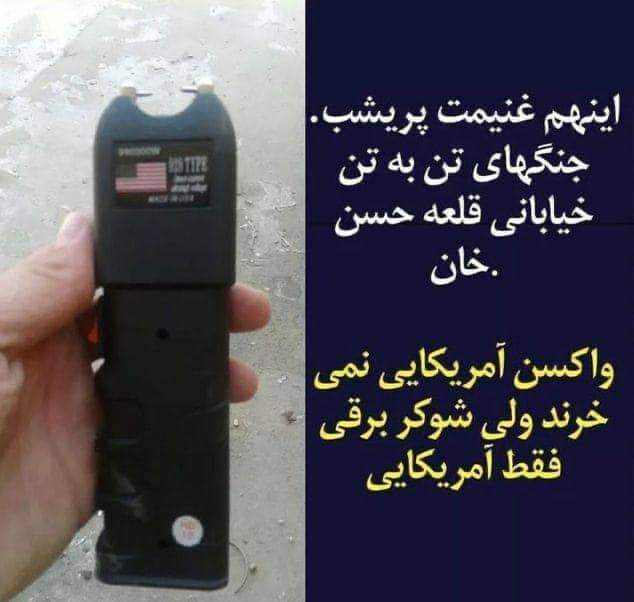
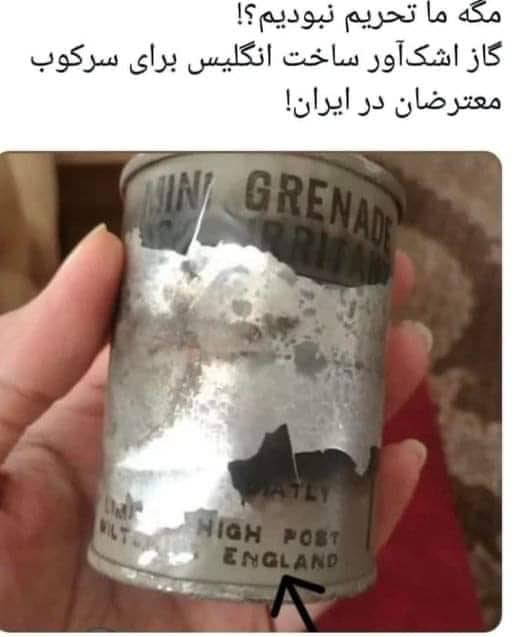
Moreover, under both Democratic and Republican administrations, the United States imposes sanctions that worsen the economic conditions women face in Iran, already under economic strain from their own self-interested leaders and domestic economic elites. Women’s access to reproductive health care is strained most by these sanctions.
It is in the volume and extent of the reactions to the suppression by government police that the liberal political system in the United States differs from the capitalism of the Islamic Republic in Iran. If in every corner and cranny of Iran, desperate and angry people have come to the streets against this system, society in the United States remains indifferent to the systematic murders and oppression perpetrated by the US police, which remain largely unnoticed. Beyond the melodramatic imperial gaze, where is the bridge of international solidarity? According to a Princeton study, the bottom 90% of earners in the U.S. have no impact on policy. Rich donors are the only people politicians represent.
Neither religious fundamentalism and political Islam nor other modern phenomena that negate women’s agency to “liberate” them can be the basis of any kind of genuine internationalist solidarity. Confronting the discipline and modern policies of “respectable women,” both religious and secular, and the objectification of women’s bodies, whether veiled or not, should be an integral part of the struggle against what is happening to the Zhinas, from Tehran to Kabul and Cairo, from New York and Minneapolis to Gaza, Tel Aviv, and Istanbul.
Iran’s current uprisings will force the so-called morality police into the dustbin of history, even if mandatory dress codes will remain in place for a little while longer. In the Islamic Republic, however, these ideological entities have served as tools of the ruling class to dominate, humiliate, and commodify women’s bodies, intensify identity conflicts, and marginalize class demands for decades.
The “Democracy Promotor” Vultures and their Marketing
The mandatory dress code used to be a tool of the ruling class in the 1980s to exert hegemony and mobilize layers of society to support its cultural policies. Through media, the fashion industry imposes an unrealistic image of women and LGBTQIA+ people on society. Imposing a specific clothing pattern on women’s bodies as commodities is the logic of “guidance” in Iran’s capitalist system. To talk about solidarity, we need to bring up the connection between these two logics in the daily conversation of these upheavals in the Middle. It is capitalism that is patriarchal.
Apart from the ideological framework and imperial agenda of the mainstream media, the vast amount of misinformation about basic information is pathetic. A recent piece in The Washington Post, authored by the provost of the University of Montana and author of Passionate Uprisings: Iran’s Sexual Revolution illustrates just how little the author knows about the 1979 revolution. According to her, Ayatollah Khomeini and his key supporters came to Iran after the overthrow of the Monarchy, the “official” revolution date. In fact, Khomeini arrived in Iran ten days earlier, and his key supporters had been organizing on behalf of the Ayatollah. What is at stake in this seemingly pedantic point is this imperial media marketing is characterized by hostility and ignorance about the 1979 incomplete revolution in spite of the ongoing clash between the promises of the 1979 revolution and the realities of counterrevolution.
Meanwhile, the Islamic Republic’s brutality provides the biggest gift to imperialist forces and their contractors like Masih Alinejad, who has been sold to the readers of the New Yorker as “The Exiled Dissident Fuelling the Hijab Protests in Iran.” In the human rights industry, these parasitic actors continue to exploit the country’s struggle.Several scholars and activists, both within Iran and abroad, have criticized Alinejad’s portrait. They tried to remind the public about Alinejad’s pictures next to ultra-religious right-wing politicians such as Michael Pompeo, former director of the CIA and Trump’s Secretary of State and Senator Jim Risch (R-Idaho). These figures have long been regarded as the arch enemies of women and LGBTQIA+ rights in the United States. Dexter Filkins’s New Yorker portrait of these types, addressed to US “progressive” audiences, connects the dots. There is a connection between his coverage of the 2003 US invasion of Iraq and its pro-West “opposition” for the New York Times and the Iranian version. A key word is “democracy.”
Nevertheless, the case of Masih Alinejad is only one example of the project of imperialist feminism. Nikzad Zanganeh, a Marxist-feminist activist in Iran, argues that wage activism is the most important and fundamental criticism in the context of the corporatization of activism. As she points out, Alinejad’s voice today isn’t necessarily a result of principled positions or strong performance, but rather a response to a keen understanding of market trends. There is an “unsold” product on this market that Alinejad knows how to market and find a “buyer” for. A long history of this mechanism, especially in media and academia, in relation to the target countries of imperialism in the Global South, goes beyond the scope of this article. In this market, Alinejad does not wear any leftist mask when selling her commodity. However, there are plenty of cases of academics and media people who hide behind leftist masks and have no principles in their marketing.
Rather than the Islamic Republic regime in transition and the colonial binary of “Islam versus democracy”, the root of the disaster lies in patriarchy and police apparatuses who are guardians of capitalist order. From Iran, Iraq, Turkey, Afghanistan and Yemen to Syria, Tunisia, Saudi Arabia, Israel, and the Occupied Palestinian Territories, this is the forgotten discussion of the Zhina’s uprising (the life’s uprising.) The false dichotomies between ethnicities and religions divide the working class and conceal the root causes, as well as placing identity conflicts ahead of class conflicts.
The tragedy of Zhina in the Islamic Republic has global roots. Nationalist discourse has nothing to do with it. In itself, it is part of the issue, whether it is of the Pan-Iranist type or of those who sell themselves to the balkanization of the region, which is sadly favored by a portion of Kurds, Turks, and Khuzestanis of Iran, historic victims of the central government.
Although the imperialist agenda and the question of balkanization has always been one of the concerns of independent observers, the bravery of people across Iran to confront the regime has been disused widely in the social media. The reality of the situation goes beyond neoconservative and liberal imperial think tanks, from the Foundation for Defense of Democracies (FDD) to the Atlantic Council, from the Carnegie and Brookings Institution to Washington-based lobby the National Iranian American Council (NIAC), which has been selling its brand of yuppie neoliberalism to its “progressive” clients in the US. The terms “violence,” “revolutionary anger,” and “the right to self-defense” should be distinguished from each other, contextualized, and historized separately. Language and language distortions have been used by neoliberals and neocons for demagoguery. The version of condemnation of violence is twisted by this linguistic trick because violence is morally reprehensible and condemnable. It is worth noting, however, that violence and the right to self-defense are two different concepts whose nature is different, they are inherently different, and mixing them up is one of the tricks of the ideological state apparatuses from the Occupied Palestinian Territories to the United States and the Islamic Republic in Iran. It is important to contextualize the warning on “violence” when it comes to the current upheavals in Iran. There is no doubt that imperialist intrusions both by infiltrating the regime’s security forces and other external factors such as mercenary opposition are a major concern for any revolutionary and emancipatory project.
World’s Center and Periphery and the Class Issue: Zhina’s Story
During the tragedy of Zhina’s murder, the relationship between power and the periphery was ignored as was the global context of the event. In the media, Zhina, the Kurdish name of Mahsa, meaning “life”, was first marginalized. The central government has historically imposed systematic pressure on Kurdistan, resulting in many people having two names. This is because many Kurdish names are not recognized by the civil registry office. Having a “Persian” name can also give a sense of social identity. Media reports once again favored Mahsa. In Tehran, where “non-Tehranis” are considered “shehrestani” (“provincial”), Zhina traveled with her mother and brother via public transportation. Mahsa’s (Zhina’s) short trip to the center and the use of public transportation, such as the subway, was the end of her. In a mega city like Tehran, many women and queer people are forced to travel on public transportation, to sell their labor in different parts of the city, making them easy prey for the Islamic Republic’s “Gasht-e-Ershad,” (“guidance patrols”). People who travel without hijab in their personal car in affluent and upper-class neighborhoods in northern Tehran are usually less vulnerable to attacks.
Shortly after this tragedy, the editor-in-chief of one of the main media outlets of the militarized bureaucratic bourgeoisie of Iran, Javan Newspaper, an IRGC-affiliated newspaper, wrote: “Do you know that the number of people who are killed by the American police during arrests and in the detention center (before trial) is many times more than the total number of people sentenced to death (after trial) in Iran?!”
It is undisputed that the capitalist government of Iran (representing Iran’s “Look to the East Policy” in geopolitics) is competing against the capitalist government of the United States for the title of champion in the field of police violence, as the Red Circuit, one of the alternative Farsi-language Telegram channels, stated.
Iranian Protesters’ Class Arrangement
In terms of class analysis of Iranian protesters, there has been a strong presence of the so-called middle class among the current protesters in Iran up until now. This is a class that is becoming economically weaker every day, despite pursuing specific demands regarding social freedoms and life style. People across Iran, from Tehran to small towns, have shown unprecedented courage against police repression. There is a wide range of footage of resistance filmed from the deprived neighborhoods to the affluent neighborhoods. Among the protesters who died in the protests, many come from working class backgrounds. Making conclusions about the class composition of the protests based on the current data, however, would be very difficult. It can only be said that the sense of loss and the lack of horizon in terms of social, cultural, and livelihood affects different strata of people with different motivations. Since many of the angry demonstrators are barely in their twenties, extensive research is necessary. The Islamic Republic’s dress code has always been a major concern of the middle class in big cities, but the current protest, triggered by national identity and economic hardships, goes beyond this social milieu.
Organizations such as the National Union of Iranian Retirees, nurses, teachers, and others that have been at the forefront of protesting privatization and neoliberalism in the Islamic Republic have yet to demonstrate a “direct” and organized presence during the recent wave of protests. We read in the joint statement of the pensioners called “We retirees hate everything about you,” that:
…. We, the pensioners, have not only never given up, but we have brought the biggest fight against poverty to the biggest protest/wage movement,” according to the pensioners’ joint statement. Our conflict and the lives of millions of our children face another historic chapter… Fighting the evils of poverty, repression, looting, and corruption against a power reliant on weapons and wealth to survive and continue. However, these historical conditions will not return to the past. Retirees will instead fight for their robbed lives, to undo all the inhumane laws and structures, and to achieve the freedom and prosperity they deserve, rather than “bargaining,” and not only for the humiliation of anti-labor laws. Not only will we be in the ranks of these people’s protests every moment, but we will also bring the largest protest movement of the ninety-nine percent of society to the streets…
Many universities, including Alzahra, founded by the Islamic Republic for ideological purposes, have seen large numbers of protesting students burning scarves. It is a continuation of the historical tradition from the Shah’s regime to the Islamic Republic. Abolition of the hijab or even the much milder dissolution of the guidance patrol would make a big impact on anti-hegemonic struggles. In response to the current developments, the students at Tehran Polytechnic University made a clear statement:
As per the normal procedure for governance, neither the responsible institutions are accountable for their crimes, nor are the national and international media and their international crews who contend for an equal share of the nation’s life spreading false news. In doing so, they turn the truth about this terrible crime upside down. The hijab issue is now a red line for the government, and any resistance will be met with severe repression. The violence inflicted upon Mahsa Amini will not be the first or the last…
There are limits to the continued presence of protesters on the streets. In addition to the issue of repression, which despite the killing of dozens of protesters is not comparable to the brutality of the police during the previous rounds of livelihood protests, at issue is the fatigue of the people on the street. It is not yet clear what level of demands will be made at this stage. Meanwhile, the educators’ union calls on Iranian teachers and students to go on strike. Observers believe protestors in the streets can only be helped by a nationwide strike. Whether in the United States, Iran, or anywhere else, the issue of women’s rights or LGBTQIA+ rights is fundamentally a class issue. Historically, abortion has been a major issue for women from lower-working class and primarily non-white communities in the United States. In Iran, the regime wishes to “guide” the marginalized and working class children to heaven through the hellish path of “morality police”; meanwhile, its bourgeois class either lives in Basti Hills or migrates with millions of dollars of capital every year to the mecca of their dreams, Toronto.
Women, men, workers, and feminists and queer activists in the region, including Iran, struggle against commodification and objectification on both sides of the religious fundamentalism of capital in Iran and Christian and Jewish liberal democracy in the United States or Israel.
In social media, there are pictures and biographies of the fallen Iranian protesters every minute. So far, 41 people have died in the unrest, but human rights groups say the number is more than 75. The Persian-speaking media of the West and Saudi petrodollars are consuming the victims. Meanwhile, Feuerbach’s eleventh thesis is whispered across the country by photos of fallen Iranian protestors, mostly very young; from Tehran to the most remote deprived cities of Iran. As each picture of these fallen people is juxtaposed with other pictures throughout the history of Iran and the world, it takes on meaning. There are times when in such a landscape of sorrow, the legacy of liberation struggles can almost be seen as invisible, taking on a ghostly appearance. While the current protests in Iran are a continuation of protests against both the Shah’s and Islamic Republic’s regimes, contextualizing and historicizing them allows one to move beyond their distorted narrative. In this way, we can overcome the obfuscation of the term “revolution,” which has become meaningless and a symbol of nothing. Revolution, “not as a model, not as a prefabricated schema, but as a strategic hypothesis and a regulating horizon.”
